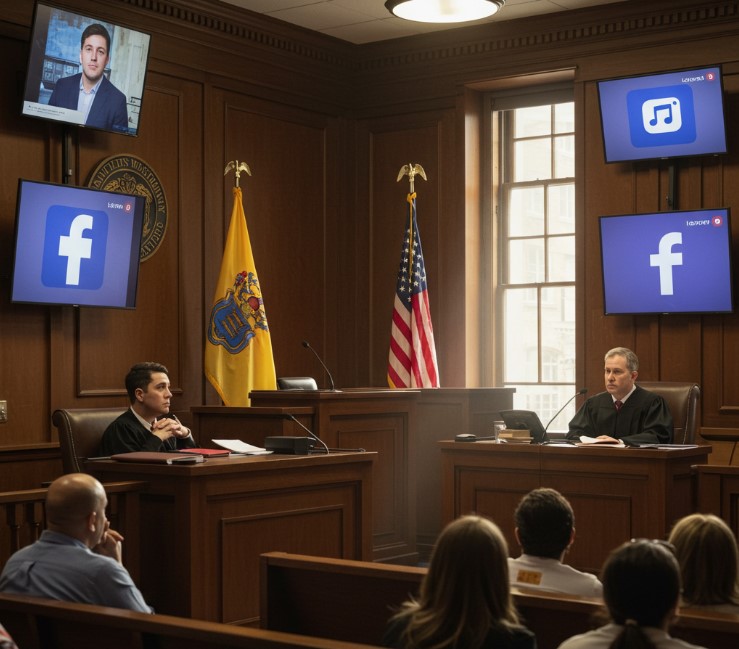Published in New Jersey Municipalities, March, 1997
Many municipalities throughout New Jersey have witnessed an increase in the number of applications before their zoning and planning boards seeking approval of radio transmission towers. As mobile communications have expanded to serve ever increasing numbers, the need for radio towers has also necessarily increased. Despite several published decisions approving radio towers, public officials have been faced with regular staunch public opposition to proposed towers. While radio towers may be considered inherently beneficial uses, deserving special treatment under the law, some towers may be successfully opposed, provided the board and the public act fairly. The board must only consider proper evidence and must only consider proper evidence and must measure any application, including inherently beneficial uses, against the prescribed zoning criteria. The courts have concluded that if radio towers are essential to meet regional public need, then local boards must grant them approval, regardless of local zoning standards and despite community opposition. In effect, the courts have found radio towers to be what is commonly referred to in zoning law as “inherently beneficial uses.”
Inherently beneficial uses are uses which are so important to society that they must be allowed in any zone regardless of a municipality’s master plan. Uses determined to be inherently beneficial are generally non-profit uses such as schools, hospitals or low income housing. However, some commercial uses have been found to be inherently beneficial uses as well, such as for-profit senior citizen congregate-care facilities, a 120-bed nursing home, a private day-care nursery, a tertiary sewage treatment plant to serve a commercial trailer park, a head-trauma center.
In a recent unpublished case, CMK v. Point Pleasant Beach Board of Adjustment, the Law Division Court accepted the board’s argument that while some radio towers may qualify as inherently beneficial uses, that board correctly refused to grant inherently beneficial treatment to this applicant as it failed to provide substantial evidence of a gap in the telecommunications grid and/or a need for enhanced emergency service communication. Radio towers were determined to constitute an inherently beneficial use in three recent cases; the Kingwood, Nynex, and New Brunswick Cellular cases. In all three cases the applicants were seeking to increase the height of existing towers and all three were telecommunication companies which were able to prove that a communications gap existed. In the Kingwood case, the owner of the tower in question was a Fire Department. The Fire Department was going to lease the extended tower to a telecommunications provider, with the benefit to the Fire Department being improved emergency communications. In effect, for a radio tower to be deemed an inherently beneficial use, an applicant must show that the tower will close a bonafide telecommunications gap and/or meet an essential emergency services need. Otherwise, the underlying reason for granting inherently beneficial use status to radio towers is non-existent.
In CMK v. Point Pleasant Beach Zoning Board of Adjustment, which was not appealed, the Court agreed with the board that the radio tower in question was not an inherently beneficial use, because the applicant failed to prove that it was closing a bonafide communications gap. The plaintiffs also failed to prove that the tower would satisfy a need of emergency services. The Law Division, by finding for the board, confirmed the board’s contention that radio towers may be an inherently beneficial use, but absent the proper support, there is no requirement that every tower be deemed an inherently beneficial use.
Even if an applicant provides adequate proof that a radio tower should be considered an inherently beneficial use because it fills a bonafide communications gap, the proposal may be denied if the negative impact on the surrounding property is greater than the positive impact derived from the use. The New Jersey Supreme Court, in Sica, found a cardiologist’s office to be a commercial use and an inherently beneficial use. More importantly, the court enunciated a very clear four prong test for determining when an inherently beneficial use can be denied because of its impact on the community or neighborhood. The four prongs are: First, the board should identify the public interest at stake. Some uses are more compelling than others. Second, the board should identify the detrimental effect that will ensue from the grant of the variance. Third, in some situations, the local board may reduce the detrimental effect by imposing reasonable conditions on the use. Fourth, the board should then weigh the positive and negative criteria and determine whether, on balance, the grant of the variance would cause a substantial detriment to the public good.
Simply, while inherently beneficial uses are to be allowed anywhere, in any zone, those inherently beneficial uses which can be demonstrated to have a substantial negative impact on the surrounding property owners or community, can be denied. In each of the three major cases on inherently beneficial uses, the radio tower was quite a distance from any additional buildings or properties that could be harmed by a collapsing tower, no matter how unlikely that occurrence might seem. In the CMK case, within two hundred feet of the proposed tower, there was a commuter train station, a middle school, many homes and businesses, and Route 35, a North/South evacuation route. In the face of testimony that the tower would never fall, the objectors in the CMK case raised considerations such as icicles forming on the radio tower. The objectors provided mathematical equations to prove that a very low and relatively normal wind could knock icicles off the tower and on to the highway or the adjacent sidewalk. There were also other concerns raised about the potential for the tower being a constructive nuisance, i.e. that children might attempt to climb it, and that the property contained an existing oil tank which would be damaged by the tower or vice versa. In effect, even if the tower in the CMK case was an inherently beneficial use, the board found that it would not have met the Sica test and would have failed for having had too great a negative impact on surrounding property owners, the community and summer visitors to Point Pleasant Beach. As can be seen, depending on the type and location of the tower, a substantial defense can be made to prevent an unwanted tower.
It is extremely important, however, that the board and the board attorney remain impartial and allow the applicant to present a full and complete case. Negative impacts come best as testimony from objectors and/or the public in general. In the CMK case, the board retained an expert planner. The board has an absolute right to hire such expert, as allowed by statute, to balance out the hearing, with the concept of being able to obtain the most complete record possible. Remember that the Standard of Review for zoning board cases, as well as for any action by any local government agency, is whether the action of the board was arbitrary, capricious or unreasonable. To avoid such a delusion, the board must carefully listen to all the proofs, not allow testimony that is improper, and ask alert and intelligent questions without becoming adversarial with the applicant. In addition, the board must spend time carefully deliberating their decision, including considerations as to the four prong Sica test and the standard for inherently beneficial uses, as well as use variance relief in general and the board should specifically set forth, on the record, all of their reasons for either a grant or a denial of such an application. When any decision is reached in this fashion, it makes it very difficult for a reviewing court to reverse the actions of the board below.
One issue that seems to come up regularly as a negative impact of radio towers is radiation. The introduction of this issue has been clearly rejected by the courts. The idea is that the Federal Government has pre-empted this area, and as such it is not an appropriate consideration upon which to base a denial. The board must convince the public that such testimony will taint the hearing, which would only work to the applicant’s advantage when ultimately the board’s sanctions are reviewed by a judge. Other similar issues which a board could be faced with are the FAA regulation of airplane traffic in or around the radio towers, and the FCC’s regulation of antennas placed on the tower. It should be noted that a board cannot control the types, quantities, or number of ancillary whip antennas which will be attached to a radio tower.
Hopefully, if your community is adverse to a tower in a specific location, some of the thoughts expressed here will assist you in properly, fairly and correctly opposing a radio tower. Some of the information would apply equally to the opposition of any proposed inherently beneficial use. As for boards, it is essential that board members become acquainted with these standards before such applications are brought before them. The goal of such preparation being that if the board acts in a reasonable and deliberate manner, their findings and conclusions will be affirmed by the courts.












